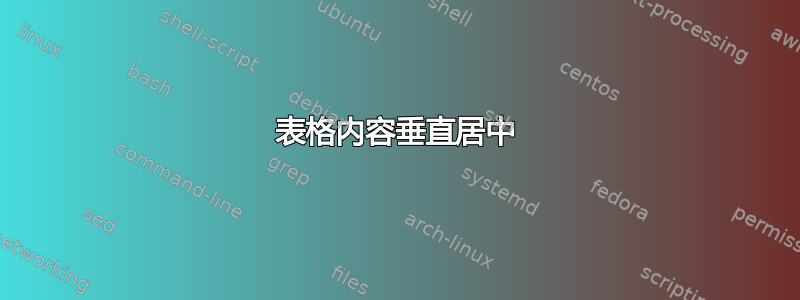
我不知道为什么这个表格的某些单元格没有正确居中。附上源代码。谢谢!
\begin{table}[]
\centering
\caption{My caption}
\label{my-label}
\resizebox{\textwidth}{!}{%
\begin{tabular}{@{}llc@{}}
\toprule
\multicolumn{1}{c}{Known facts} & \multicolumn{1}{c}{Open questions} & Objectives \\ \midrule
\begin{tabular}[c]{@{}l@{}}The resistance to matrix cracking depends on\\ ply-thickness (also known as in-situ effect)\end{tabular} & \begin{tabular}[c]{@{}l@{}}There is no evidence of the in-situ effect under\\ out-of-plane shear\end{tabular} & \multirow{4}{*}{A} \\
\multirow{3}{*}{\begin{tabular}[c]{@{}l@{}}\\\\Out-of-plane (``transverse'') shear loads involve \\ shear cracks and delamination\end{tabular}} & \begin{tabular}[c]{@{}l@{}}There is controversy about which damage \\ mechanism triggers the other\end{tabular} & \\
& \begin{tabular}[c]{@{}l@{}}There is controversy about which damage \\ mechanism penalizes the load-carrying\\ capacity\end{tabular} & \\
& \begin{tabular}[c]{@{}l@{}}There is no clear evidence of how ply-thickness\\ affects the damage sequence\end{tabular} & \\ \midrule
\begin{tabular}[c]{@{}l@{}}Thin-plies increase certain in-plane properties \\ because of the in-situ effect\end{tabular} & \multirow{2}{*}{\begin{tabular}[c]{@{}l@{}}There is little evidence of how thin-plies \\ respond to low-velocity impact loading\\ (particularly true for thin laminates)\end{tabular}} & \multirow{2}{*}{B} \\
Thin-plies display brittle failure mechanisms & & \\ \midrule
\begin{tabular}[c]{@{}l@{}}Interleaving polyamide non-woven veils may \\ enhance the impact resistance, tolerance and \\ interlaminar fracture toughness\end{tabular} & \begin{tabular}[c]{@{}l@{}}Few studies connect the microstructure and the \\ properties of interleaved systems\end{tabular} & \multirow{2}{*}{C} \\
\begin{tabular}[c]{@{}l@{}}The improvement comes with a penalty of\\ certain in-plane properties\end{tabular} & Few studies incorporate light non-woven veils & \\ \bottomrule
\end{tabular}%
}
\end{table}
答案1
我建议不要使用以使表格适合文本宽度。此外,如果您使用以下示例所示的环境,则adjustbox不需要所有嵌套表格和手动换行符:tabularx
\documentclass{article}
\usepackage{geometry}
\usepackage{booktabs}
\usepackage{multirow}
\usepackage{tabularx}
\begin{document}
\begin{table}
\centering
\caption{My caption}
\label{my-label}
\begin{tabularx}{\textwidth}{@{}XXc@{}}
\toprule
\multicolumn{1}{c}{Known facts} & \multicolumn{1}{c}{Open questions} & Objectives \\ \midrule
The resistance to matrix cracking depends on ply-thickness (also known as in-situ effect) & There is no evidence of the in-situ effect under out-of-plane shear & \multirow{10}{*}{A} \\
& There is controversy about which damage mechanism triggers the other & \\
Out-of-plane (``transverse'') shear loads involve shear cracks and delamination & There is controversy about which damage mechanism penalizes the load-carrying capacity & \\
& There is no clear evidence of how ply-thickness affects the damage sequence & \\ \midrule
Thin-plies increase certain in-plane properties because of the in-situ effect & \multirow{4}{=}{There is little evidence of how thin-plies respond to low-velocity impact loading (particularly true for thin laminates)} & \multirow{4}{*}{B} \\
Thin-plies display brittle failure mechanisms & & \\ \midrule
Interleaving polyamide non-woven veils may enhance the impact resistance, tolerance and interlaminar fracture toughness & Few studies connect the microstructure and the properties of interleaved systems & \multirow{5}{*}{C} \\
The improvement comes with a penalty of certain in-plane properties & Few studies incorporate light non-woven veils & \\ \bottomrule
\end{tabularx}%
\end{table}
\end{document}
答案2
表格中常用的约定是,空白表示在给定列中重复相同的条目,直到被另一个值取消。
根据提议的设置,理解左栏中的段落在中间栏中指的是什么以及目标的代码引用会相当困难。
\documentclass{article}
\usepackage{booktabs}
\usepackage{tabularx}
\begin{document}
\begin{table}[htp]
\centering
\caption{My caption}
\label{my-label}
\small
\begin{tabularx}{\textwidth}{@{}XXc@{}}
\toprule
\multicolumn{1}{c}{Known facts} & \multicolumn{1}{c}{Open questions} & Objectives \\
\midrule
The resistance to matrix cracking depends on ply-thickness (also known as in-situ effect)
& There is no evidence of the in-situ effect under out-of-plane shear
& A
\\ \addlinespace
Out-of-plane (``transverse'') shear loads involve shear cracks and delamination
& There is controversy about which damage mechanism triggers the other\par
There is controversy about which damage mechanism penalizes the load-carrying capacity\par
There is no clear evidence of how ply-thickness affects the damage sequence
\\
\midrule
Thin-plies increase certain in-plane properties because of the in-situ effect\par
Thin-plies display brittle failure mechanisms
& There is little evidence of how thin-plies respond to low-velocity impact loading
(particularly true for thin laminates)
& B
\\
\midrule
Interleaving polyamide non-woven veils may enhance the impact resistance, tolerance and
interlaminar fracture toughness
& Few studies connect the microstructure and the properties of interleaved systems
& C
\\ \addlinespace
The improvement comes with a penalty of certain in-plane properties
& Few studies incorporate light non-woven veils
\\
\bottomrule
\end{tabularx}
\end{table}
\end{document}
在这种实现中,水平规则将清楚地表明“A”指的是第一个块中的所有内容,如果“A”向下移动到第二部分长文本的旁边,这可能就不那么明显了。
如果将目标设置在左边,可能会更加清晰:
\documentclass{article}
\usepackage{booktabs}
\usepackage{tabularx}
\begin{document}
\begin{table}[htp]
\centering
\caption{My caption}
\label{my-label}
\small
\begin{tabularx}{\textwidth}{@{}cXX@{}}
\toprule
Objectives & \multicolumn{1}{c}{Known facts} & \multicolumn{1}{c}{Open questions} \\
\midrule
A
& The resistance to matrix cracking depends on ply-thickness (also known as in-situ effect)
& There is no evidence of the in-situ effect under out-of-plane shear
\\ \addlinespace
& Out-of-plane (``transverse'') shear loads involve shear cracks and delamination
& There is controversy about which damage mechanism triggers the other\par
There is controversy about which damage mechanism penalizes the load-carrying capacity\par
There is no clear evidence of how ply-thickness affects the damage sequence
\\
\midrule
B
& Thin-plies increase certain in-plane properties because of the in-situ effect\par
Thin-plies display brittle failure mechanisms
& There is little evidence of how thin-plies respond to low-velocity impact loading
(particularly true for thin laminates)
\\
\midrule
C
& Interleaving polyamide non-woven veils may enhance the impact resistance, tolerance and
interlaminar fracture toughness
& Few studies connect the microstructure and the properties of interleaved systems
\\ \addlinespace
& The improvement comes with a penalty of certain in-plane properties
& Few studies incorporate light non-woven veils
\\
\bottomrule
\end{tabularx}
\end{table}
\end{document}






